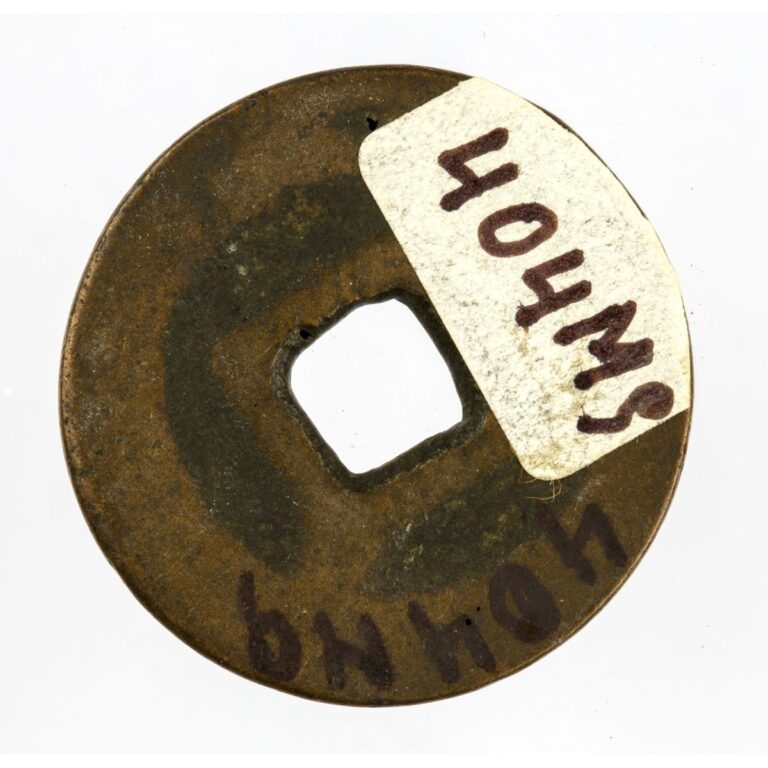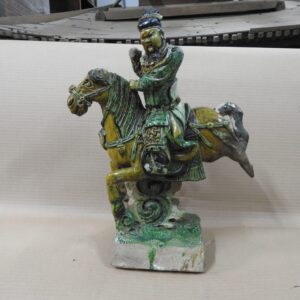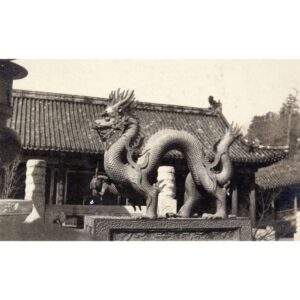Coin Honghua tongbao
A round copper alloy coin with a square hole in the centre, called fangkong qian 方孔錢. These appeared in various denominations, mostly as tongbao 通寶 (“common currency”) coins, which were worth one monetary unit, yuanbao 元寶 (“original currency”) and zhongbao 重寶 (“heavy currency”) which had higher denominations. In many varieties and denominations, such coins had been in circulation as standard money since the time of Emperor Gaozu 高祖 (reigned 618–626), the first emperor of the Tang Dynasty (618–907) until the end of the Qing Dynasty (1644–1912). The inscription on the coin usually consists of two characters, reading from top to bottom, indicating the name of the reign or the period in which the coin was minted. The other two characters are to be read from right to left. On the left-hand side of the coin is usually the character bao 寶 (wealth, preciousness), which in combination ... more
A round copper alloy coin with a square hole in the centre, called fangkong qian 方孔錢. These appeared in various denominations, mostly as tongbao 通寶 (“common currency”) coins, which were worth one monetary unit, yuanbao 元寶 (“original currency”) and zhongbao 重寶 (“heavy currency”) which had higher denominations. In many varieties and denominations, such coins had been in circulation as standard money since the time of Emperor Gaozu 高祖 (reigned 618–626), the first emperor of the Tang Dynasty (618–907) until the end of the Qing Dynasty (1644–1912). The inscription on the coin usually consists of two characters, reading from top to bottom, indicating the name of the reign or the period in which the coin was minted. The other two characters are to be read from right to left. On the left-hand side of the coin is usually the character bao 寶 (wealth, preciousness), which in combination with the character on the right means “currency” or “money in circulation”. This is usually the character tong 通 (circulate, be uniform, general or universal), but often alsoyuan 元 (origin, basis) or zhong 重 (weight), which usually denote coins with a larger face value. Thus, the entire inscription literally means “money in circulation at the time of this or that emperor” or “in this or that period of a single emperor’s reign”.
This coin is one of those issued between 1679 and 1681 by Wu Shifan 吳世璠 (1663–1681), the grandson of Wu Sangui 吳三桂 (1612–1678), a rebel against dynastic rule in the early Manchu Qing 清 Dynasty (1644–1912). Wu Sangui was one of the so-called “three governors” (san fan 三藩), former military commanders of the Ming dynasty 明 (1368–1644) who helped overthrow the dynasty in return for control of distant southern Chinese provinces. Wu Sangui controlled an area of Yunnan province, and his authority extended even to neighbouring Guizhou province. When the Manchu court in Beijing decided to abolish the power of the governors in the south in 1673, Wu launched a military rebellion, soon occupied much of southern China, and proclaimed the Zhou Dynasty (1678–1681) in 1678, declaring himself emperor with the title Zhaowu 昭武, but died suddenly a few months later that year. He was succeeded by his eldest grandson Wu Shifan, who took the imperial title Honghua 洪化, meaning “great reform”, in 1679. In the same year, the Manchu army gradually began to occupy southern China. In 1681 Yunnan also fell into Manchu hands, and Wu Shifan committed suicide. During his brief reign, he issued the Honghua tongbao 洪化通寶 coins, an example of which is shown in the photo. The reverse also bears the character Hu 户, which is most probably the abbreviation for the Bureau of Revenue or Hubu ju 户部局. (MG)







































Do you have a comment or additional information about the subject?